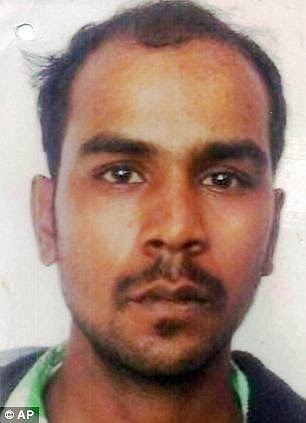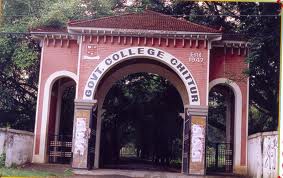HAPPY MAKARA SHANKRANTI
I wish everybody who reads this a very happy and jovial Makara Sankranti.
Makara Sankranti has deep spiritual significance and is rooted in an unshakable divine history. Makara Sankranti is a solar event; the date of Makara Sankranti remains constant at, 14 January. In Hinduism, the Sun signifies light (knowledge, spirituality, and wisdom), unity, equality, and true selflessness, the ideals of Karma Yoga. Sun goes on bestowing on our life, health & vitality without expecting any reward. Thus Makara Sankranti signifies shunning the darkness of delusion and allowing the light within shine brighter. It identifies a period of enlightenment, peace, prosperity, and happiness after a period of darkness, ignorance, and viciousness with immense sorrow. The message being ‘one should gradually begin to grow in purity, wisdom, and knowledge, as the sun does from this day and perform one's duties without expectations of rewards.’
The name has been derived from the word Sankramana in Sanskrit, meaning “commencement of movement”. Sankranti means the transit of the Sun from one zodiac sign to another. Makara Sankranti refers to the transition of the Sun from Dhanu Rashi (Sagittarius) to Makara Rashi (Capricorn); and for this purpose, the sidereal zodiac signs are considered, thus accounting for the Earth’s precession of the equinoxes. The significance being from this day onwards, the days start becoming longer and warmer, and thus the winter chill declines. Traditionally, this has been one of many harvest days in India. The festival is also referred to as Uttarayana as it marks the starting of the northward journey of the Sun. Many reasons are ascribed in our religious texts like the Puranas for the celebration of this festival, some of which are as mentioned below.
Starting the 14th January, Sun the father visits the house of his son Shani, who is the lord of Makara Rashi. They do not ordinarily get along nicely, but in spite of all the differences, Sun makes it a point to stay with his son at his house, for a month. This symbolizes the importance of the special relationship between the father and the son.
Uttarayana also marks the beginning of the “day” for Devatas, while "Dakshinayana" is said to be the “night” for Devatas, so most of the auspicious things are done during this time.
It was on this day when Lord Vishnu ended the terrorism of Asuras by finishing them and burying their heads under the Mandar Mountains. Thus this occasion also represents the end of negativities and the beginning of an era of righteous living.
Makara Sankranti A documentary
It was on this day that the great savior of his ancestors, Bhagirath did "Tarpana" with the Ganges water for his unfortunate ancestors and thereby liberated them from the curse.
Another well-known fact is a reference to this day in Mahabharata. Bhishma, the great-grandsire of the Kauravas and Pandavas, had declared his intention to leave for the heavenly abode on this day.
Artificial kites made by sponges with bird-like shapes flown on the occasion.
How various states of India celebrate Makara Sankranti
Tamil Nadu:
One of the major festivals of Tamilnadu, it is celebrated over four days. The festivities begin on the last day of the 9th Tamil month of “Maargazhi” and continue till the third day of the 10th Tamil month 0f “Thai“. It marks a new beginning; as during the month of Maargazhi people abstain from all family celebrations and spend the entire month for devotion.
Makara Sankranti, is one of the most auspicious days for the Hindus, is celebrated in almost all parts of India in varied cultural forms. Let's have a look at how it is celebrated across different regions of India.
Tamil Nadu:
One of the major festivals of Tamilnadu, it is celebrated over four days. The festivities begin on the last day of the 9th Tamil month of “Maargazhi” and continue till the third day of the 10th Tamil month 0f “Thai“. It marks a new beginning; as during the month of Maargazhi people abstain from all family celebrations and spend the entire month for devotion.
Day 1 – Bhogi Pandigai (Bhogi)

The first day of the festival is Bhogi Pandigai where Pandigai means celebrations. It is celebrated by throwing away and destroying old clothes and materials, by setting them on fire, marking the end of the old and the emergence of the new.
The second day of the festival is Pongal Pandigai. It is the main day, falling on the first day of the Tamil month “Thai”. On this day the cooking platform is cleaned and decorated. A new bronze pot is filled with fresh milk and kept on the fire. When the milk boils over and bubbles out of the vessel, the tradition is to shout “Ponggalo Ponggal” and add rice and jaggery to it. Later it is topped with brown sugar, cashew nuts, and raisins. This symbolizes that it was going to be a year blessed with good tidings. This tradition gives Pongal its name. This rice is offered to the Sun during sunrise along with turmeric, sugarcane, a gesture that symbolizes thanks to the sun and nature for providing prosperity. It is later served to the people present in the house for the ceremony. People also prepare savories and sweets such as Vadai, Murukku, Payasam, etc.
The third day of the festival is Mattu Pongal. It is for offering thanks to cattle, as they help farmers in agriculture. On this day the cattle are decorated with paint, flowers, and bells. They are allowed to roam free and fed sweet rice and sugar cane. Some people decorate the horns with gold or other metallic covers. In some places, Jallikattu, or taming the wild bull contest, is the main event of this day and this is mostly seen in the villages.

The fourth day of the festival is Kaanum Pongal (the word kaanum means “to view”). During this day people visit their relatives, friends to enjoy the festive season. This day is a day to thank relatives and friends for their support in the harvest. It started as a farmer's festival, called Uzhavar Thirunaal in Tamil.
Andhra Pradesh:
It is a four day festival in Andhra Pradesh:
Day 1 – Bhogi Panduga (Bhogi)
Day 2 – Pedda Panduga, Sankranti (Surya)
The second day is Sankranti, the big festival when everyone wears new clothes and pray to their favorite God by offering them, sweets.
Day 3 – Kanuma Panduga (Kanuma)
Kanuma Panduga (Kanuma) is less celebrated but is an integral part of Sankranti culture.
Day 4 – Mukkanuma

The second day is Sankranti, the big festival when everyone wears new clothes and pray to their favorite God by offering them, sweets.
Day 3 – Kanuma Panduga (Kanuma)
Kanuma Panduga (Kanuma) is less celebrated but is an integral part of Sankranti culture.
Day 4 – Mukkanuma
Mukkanuma is famous among the non-vegetarians of society. People do not eat any non-vegetarian during the first three days of the festival and eat it only on the day of Mukkanuma.
Karnataka:
Makar Sankranti is marked by men, women, and children wearing colorful clothing; visiting near and dear ones; and exchanging pieces of sugarcane, a mixture of fried til, molasses, pieces of dry coconut, peanuts, and fried gram. On this auspicious day, people in Karnataka distribute Yellu and Bella (Sesame seeds and Jaggery) and greet with the words ” Ellu Bella thindu, Olle Maathu Aadu” (Eat sesame seeds and speak only good). The significance of this exchange is that sweetness should prevail in all dealings.
Cows and bullocks are gaily decorated and fed ‘Pongal’- a sweet preparation of rice. Special prayers are offered. In the evening, the cattle are led out in procession to the beat of drums and music. In the night a bonfire is lit and the animals are made to jump over the fire.
Kerala:
Makara Sankranti is celebrated in Kerala at Sabarimala where the Makara Jyothi is visible followed by the Makara Vilakku celebrations. The 40 days anushthana by the devotees of Ayyappa ends on this day in Sabarimala with a big festival.
Maharashtra:
Kerala:
Makara Sankranti is celebrated in Kerala at Sabarimala where the Makara Jyothi is visible followed by the Makara Vilakku celebrations. The 40 days anushthana by the devotees of Ayyappa ends on this day in Sabarimala with a big festival.
Maharashtra:
Maharashtrians celebrate Sankranti by exchanging multi-colored tilguls made from til (sesame seeds) and sugar and til-laddus made from til and jaggery. Since sesame seeds have a greater ability to absorb and emit sattva frequencies, consuming tilgul helps improve spiritual practice. Exchange tilgul amongst one another results in an exchange of sattvic component. Gul-polis are offered for lunch. While exchanging tilguls as tokens of goodwill people greet each other saying ” til-gul ghya, god god bola” meaning “accept these tilguls and speak sweet words”. The underlying thought in the exchange of tilguls is to forget the past ill feelings and hostilities and resolve to speak sweetly and remain friends. Womenfolk invite other married women for a get-together called “Haldi-Kumkum” and given gifts (utensils, clothes, etc.). Typically, women wear black sarees on this occasion.
Goa:
Celebrations in Goa closely resemble that in Maharashtra. The men hardly take part in the celebrations but it is the womenfolk who celebrate ‘Haldi-kumkum’.
Gujarat:
Gujaratis observe Sankrant with a lot of energy and gusto. People offer thousands of colorful oblations to the Sun in the form of beautiful kites. The act stands as a metaphor for reaching their beloved God, the one who represents the best. This festival thus helps the maintenance of social relationships within the family, caste, and community. Kite flying has been associated with this festival in a big way. It has become an internationally well-known event.
Punjab:
In Punjab where December and January are the coldest months of the year, huge bonfires are lit on the eve of Sankara and are celebrated as Lohri. Sweets, sugarcane, and rice are thrown in the bonfires, around which friends and relatives gather together. The following day, which is Sankrant, is celebrated as Magi. The Punjabis dance their famous dance Bhangra and then gather to partake in the sumptuous food that is specially prepared for the occasion.
In Bundelkhand and Madhya Pradesh, this festival of Sankrant is known by the name “Sakarat” and is celebrated with great pomp & merriment accompanied by a lot of sweets.
Orissa:
Many tribals in our country start their New Year from the day of Sankrant by lighting bonfires, dancing, and eating their particular dishes sitting together. The Bhuya tribals of Orissa have their Maghyatra in which small homemade articles are put for sale.
The festival is celebrated as Bhogali Bihu in Assam.
West Bengal:
In West Bengal, Sankranti, also known as Pous Sankranti after the Bengali month in which it falls, is celebrated as a harvest festival Pous Parbon. The freshly harvested paddy along with the date palm syrup in the form of Khejurer Gur and Patali is used in the preparation of a variety of traditional Bengali sweets made with rice flour, coconut, milk, and khejurer gur and known as Pithey. All sections of society participate in a three-day that begins on the day before Sankranti and ends on the day after. The Goddess Lakshmi is usually worshipped on the day of Sankranti.
In the coastal regions, it is a harvest festival dedicated to Lord Indra.
Fairs:
Many fairs are held on Makar Sankranti the most famous being the Kumbh Mela, held every 12 years at one of four holy locations, namely Haridwar, Prayag (Allahabad), Ujjain, and Nashik. The Magh Mela (or mini-Kumbh Mela held annually at Prayag) and the Gangasagar Mela (held at the head of the Ganges River, where it flows into the Bay of Bengal). Millions take a dip in places like Ganga Sagar and Prayag and pray to the Sun God.











.jpg)




Comments